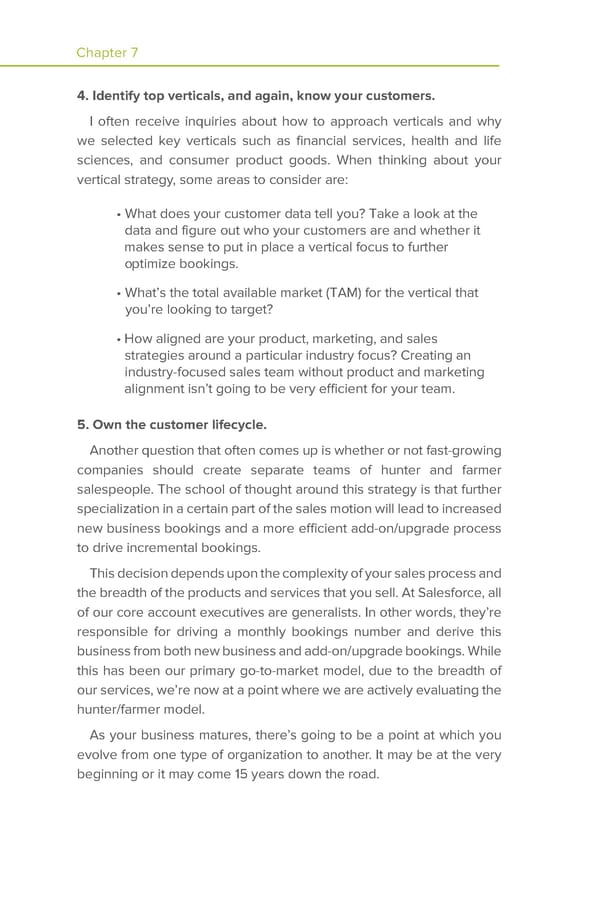Chapter 7 Sales Distribution & Segmentation Strategies 4. Identify top verticals, and again, know your customers. I often receive inquiries about how to approach verticals and why we selected key verticals such as financial services, health and life sciences, and consumer product goods. When thinking about your vertical strategy, some areas to consider are: • What does your customer data tell you? Take a look at the data and figure out who your customers are and whether it makes sense to put in place a vertical focus to further optimize bookings. • What’s the total available market (TAM) for the vertical that you’re looking to target? • How aligned are your product, marketing, and sales strategies around a particular industry focus? Creating an industry-focused sales team without product and marketing alignment isn’t going to be very efficient for your team. 5. Own the customer lifecycle. Another question that often comes up is whether or not fast-growing companies should create separate teams of hunter and farmer salespeople. The school of thought around this strategy is that further specialization in a certain part of the sales motion will lead to increased new business bookings and a more efficient add-on/upgrade process to drive incremental bookings. This decision depends upon the complexity of your sales process and the breadth of the products and services that you sell. At Salesforce, all of our core account executives are generalists. In other words, they’re responsible for driving a monthly bookings number and derive this business from both new business and add-on/upgrade bookings. While this has been our primary go-to-market model, due to the breadth of our services, we’re now at a point where we are actively evaluating the hunter/farmer model. As your business matures, there’s going to be a point at which you evolve from one type of organization to another. It may be at the very beginning or it may come 15 years down the road.
 Sales Distribution & Segmentation Strategies Page 6 Page 8
Sales Distribution & Segmentation Strategies Page 6 Page 8